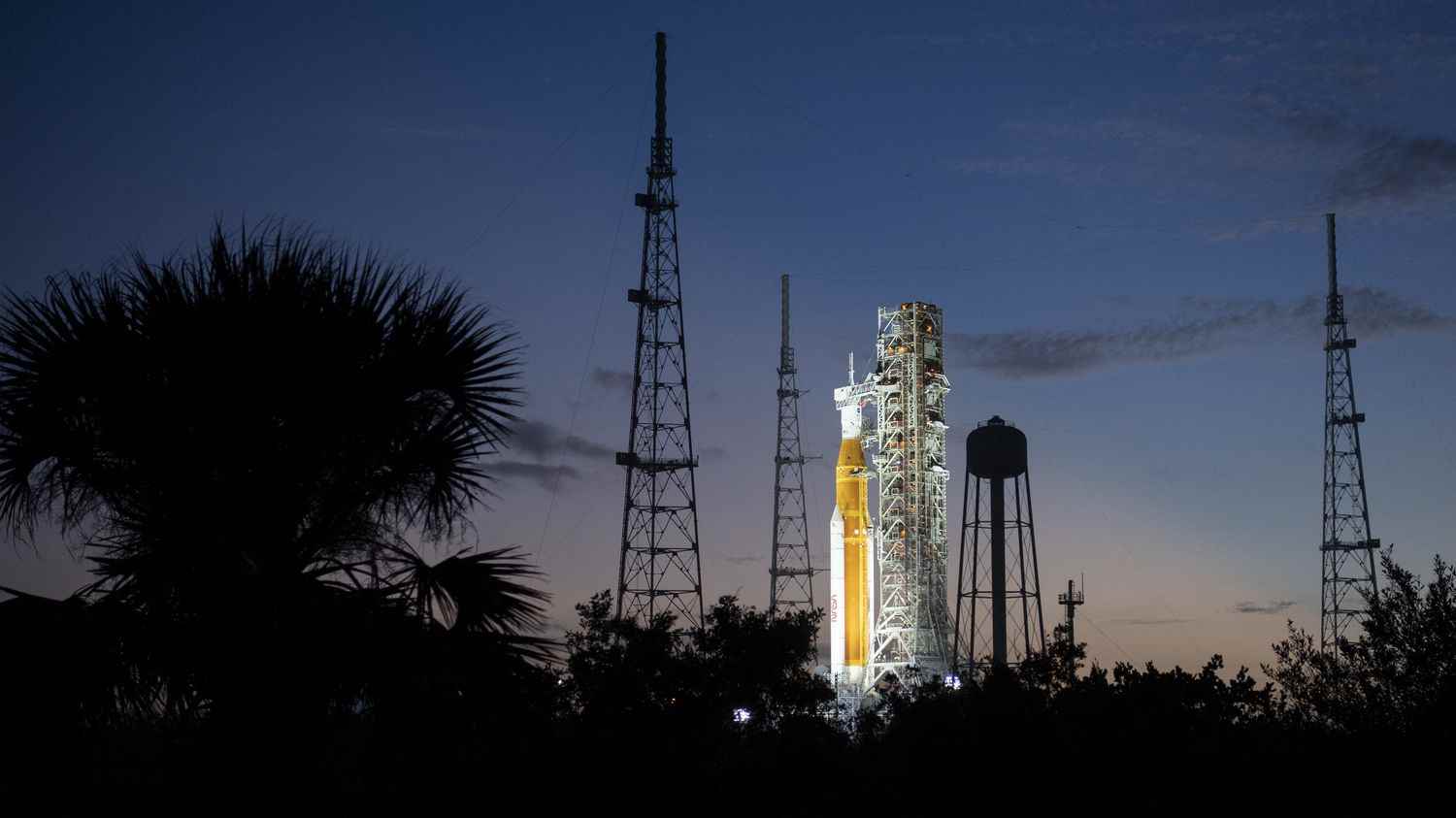NASA has announced that it is maintaining the attempt to launch its new mega-rocket for the Moon next week, Wednesday, November 16. Inspections revealed only minor damage after Hurricane Nicole hit Florida. “Nothing prevents” therefore a takeoff on this date, said at a press conference (in English) Jim Free, associate administrator at NASA, on Friday.
The launch of the SLS rocket, the most powerful ever designed by NASA, is due to take place on Wednesday at 1:04 a.m. local time (0604 GMT), with a possible launch window of two hours. The Artemis 1 test mission must propel the Orion capsule, without an astronaut on board, to the Moon, without landing there. If takeoff takes place on Wednesday, the mission would last 25 and a half days, with the capsule returning to the Pacific Ocean on December 11.
The American space agency, however, has many preparation operations to carry out by Wednesday, in particular the powering up of the vehicle and a series of technical tests. An element at the foot of the rocket, possibly damaged, may need to be replaced. Two fallback dates are planned if necessary, November 19 and 25, said Jim Free. “If we get stuck because of something we find during power-up or testing, then we’ll have to think about 19” november.
Category 1 Hurricane Nicole winds blew through the rocket as it stood outside on its launch pad at Kennedy Space Center. But they did not exceed the limits she could endure, according to Jim Free.
He conceded, however, that if NASA had known that a hurricane was approaching, the rocket would certainly have been left safe in its assembly building. She had returned there at the end of September to be protected from another hurricane, Ian, but had been released only a few days before Nicole’s passage. Before that, two take-off attempts had been canceled at the last moment during the summer, due to technical problems.
Artemis 1 will mark the launch of the flagship Artemis program, which is to take the first woman and the first person of color to the Moon, in 2025 at the earliest. NASA wants to establish a lasting human presence there, including the construction of a space station in orbit around the Moon. For the space agency, this is a step that should then allow a first trip to Mars.
